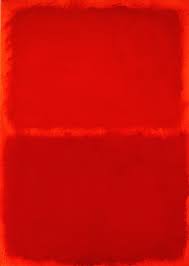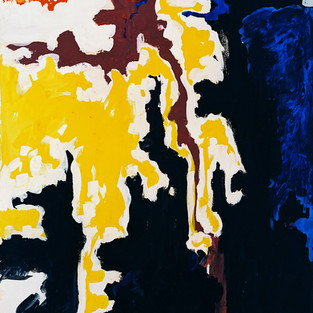- Breck Smith

- Oct 19, 2020
- 6 min read

It may seem like I read a fair number of dense books and I guess I do, but I always keep a mystery or an espionage novel going. I’ve read a lot of different authors over the years. One of my favorite mystery authors is Michael Connelly. He’s the author of the Harry Bosch novels. Bosch is a fictional police detective in the Los Angeles area. To my way of thinking, the book version of Bosch is not very much like the character as represented in the TV series “Bosch.” The book Bosch definitely has a hard-core side, but he has a saying, “Either everyone counts or no one counts.” He says that whenever there’s a case in which some of the other officers don’t believe the crime is worth investigating because the victim of the crime is a drug dealer or a prostitute or somebody considered the “dregs of society.” Then Bosch says, “Either everyone counts or no one counts.” I find this reflects his more sympathetic side, which I didn’t see much of in the TV portrayal of the character. Like the TV character, though, Bosch in the books is a rebel and he does investigate crimes on his own time because politics have dictated that he should be doing something else or not investigating that crime at all. Bosch also investigates cold cases, aka “hobby cases,” which is common among police mysteries.

Another mystery author I like to read is Robert Crais. He writes the Elvis Cole mysteries. Elvis a private detective and he’s often accompanied in the books by a friend, Joe Pike, who has a security service. One thing I like about the Elvis Cole mysteries is that the author, Crais, seems to have a sense of humor, and sometimes when you are reading so-called hard-boiled mysteries, the hard-coreness can get to you a little bit. Crais’ sense of humor helps to lighten things up. For instance, in his office Elvis Cole has assorted Jiminy Cricket figurines on his desk and a Pinocchio clock whose eyes move from side to side.

One of the things I like about mysteries and espionage novels is when they go into detail about how a crime is solved or even how a crime is plotted, as is the case with Frederick Forsyth’s The Day of the Jackal. That book carefully depicts the pains to which the shooter went in preparing for the assassination of Charles DeGaulle. It describes how the he took three or four separate trips around Europe to obtain things needed for the crime -- identities, the gun and ammunition. Two of the trips were devoted solely to the gun and ammo. On the first of these, he ordered the gun custom made, and on the second he picked it up. Forsyth just went into excruciating detail, and I find that interesting.
When it comes to murder mysteries, the British seem to have a special talent. My wife and I have been watching a lot of British mysteries on Britbox TV lately, including Jonathan Creek, Hercule Poirot, Father Brown, Shakespeare and Hathaway, and of course the various renditions of Sherlock Holmes. All of these have in common a sense of whimsy and humor.

One of the more intriguing mysteries I read was The Name of the Rose by Umberto Eco. It’s about a murder that happens at a monastery in the 14th century. Umberto Eco was a specialist in Medieval culture as well as a semiotician (semiotics is the study of signs and symbols). I’ve actually read several of his books on semiotics, as well as several other of his fiction books. His books on semiotics are interesting, but in terms of his fiction, The Name of the Rose is best. Foucault’s Pendulum, while not a mystery, would probably come second.
A few years after reading The Name of the Rose I came across a book of annotations for it called the Key to The Name of the Rose. He made a lot of allusions to history, philosophy and literature in The Rose. For instance, part of the plot of the book involves the burning of the library in the monastery. The name of the blind librarian was Jorge of Burgos. This is a reference to the Argentinian writer Jorge Luis Borges, who was blind during his later years, was director of Argentina’s National Library, and was a major influence on Eco. Eco’s fictional books are filled with allusions like this.
Espionage writers I’ve read lately include Daniel Silva, Dan Fesperman, and Alan Furst. Some of the authors I read have been journalists and some have actually worked for the CIA. These occupations gave them tremendous knowledge about history and political situations vis-à-vis their book’s plots that other authors with different backgrounds don’t have. I feel like I am learning real history along the way. Alan Furst in particular considers himself a historian. Furst’s books involve the time period in Europe from 1933 – 1944, which covers the rise of Nazism in Europe. His characters and plots always involve Paris, but also usually involve Eastern and Central Europe. Some of Dan Fesperman’s novels also involve these parts of Europe, particularly the Balkans, and it is through Fesperman’s books set in this area that I became interested in Furst’s Balkans books. The cultures of Eastern and Central Europe are interesting to me because they have been influenced by the Far East and Middle East as well as Western Europe. In fact, the people of the Balkans are a nebula of multiculturalism, with different languages, religions, customs, and politics.

Another espionage writer whom I like a lot is Martin Cruz Smith, who wrote Gorky Park. Some of Smith’s fiction is about gypsies. Gypsies apparently have traditionally made their money through either selling horses (nowadays cars) or working in metal. Smith wrote many novels set in Russia with Inspector Arkady Renko as his lead character. Smith made numerous trips to Russia doing research for the Renko novels. I particularly remember one of his books entitled Wolves Eat Dogs which was about the effects of the Chernobyl accident years after it had occurred. Smith talks especially about the effect on the plant and animal life of that region. Smith was a very engaging individual -- I emailed Martin Cruz Smith twice, and he replied both times.
A mystery writer whom I discovered relatively recently is John Harvey, a British writer. Harvey is most famous for his Charlie Resnick novels. Resnick is a police detective who likes jazz and espresso, two things I also like. In fact, the mystery writer Michael Connelly’s Bosch character also likes jazz, some of the same bebop jazz that Charlie Resnick likes. I also emailed John Harvey and he replied. I mentioned I was having trouble finding some of his books in our local library. He asked me which ones I had not read, and lo and behold! He sent me two packages of paperback books. Harvey’s books have a very languorous rhythm, a strong sense of place or atmosphere, and pacing that is very assured. Another thing notable about Harvey is that he features police characters who are black and female.

I’m leaving out a ton of writers here. I went through a phase a few years back where I was reading Scandinavian mysteries: Stieg Larsson (The Girl with the Dragon Tattoo series, for example), Jussi Adler-Olsen (e.g., The Keeper of Lost Causes), and Henning Mankell (Inspector Kurt Wallander series) among others. One author I can’t leave out is the Scottish author Ian Rankin. His police characters are Detective Inspector John Rebus and Detective Sargent Siobhan Clarke. I have a bit of a problem with the Rebus character finding the solution to his crime while in the deepest alcoholic hazes. That strains credulity. However, one thing that the Rebus character has – and shares with most good police/PI characters – is a dogged determination to solve the case. Walter Moseley’s “Easy” Porterhouse Rawlins in another wonderful character to read. One final novelist I want to mention is Robert B. Parker, who wrote the Spenser series. My wife (who has her doctorate) loves that series because there is a running joke about Spenser’s girlfriend knowing things because she has her PhD. You know, as I keep going I keep thinking of more authors, but I need to stop somewhere. This is it.


















